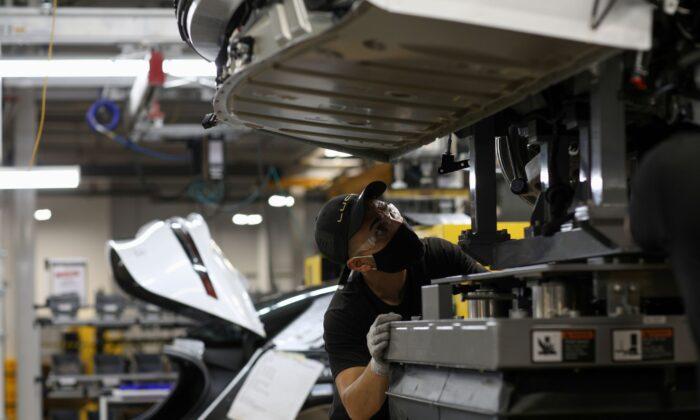WASHINGTON—U.S. manufacturing activity picked up further in September, but factories experienced longer delays getting raw materials delivered and paid higher prices for inputs.
The Institute for Supply Management (ISM) said on Friday its index of national factory activity increased to a reading of 61.1 last month from 59.9 in August.
A reading above 50 indicates expansion in manufacturing, which accounts for 12 percent of the U.S. economy. Economists polled by Reuters had forecast the index falling to 59.6.
Some of the surprise rise in the ISM index, however, was due to a jump in the survey’s measure of supplier deliveries to a reading of 73.4 last month from 69.5 in August.
A reading above 50 percent indicates slower deliveries, but a lengthening in suppliers’ delivery times is normally associated with a strong economy and increased customer demand, which would be a positive contribution to the ISM index. But in this case slower supplier deliveries indicate persistent supply shortages related to the COVID-19 pandemic.
That was underscored by a rebound in the survey’s measure of prices paid by manufacturers to a reading of 81.2 from an eight-month low of 79.4 in August. The Federal Reserve last week raised its projection for its key inflation measure to 3.7 percent this year. That was up from a median of 3.0 percent projected back in June. The U.S. central bank has a flexible 2 percent inflation target.
Aside from the technical lift from the supplier deliveries measure, manufacturing is strong.
The ISM survey’s forward-looking new orders sub-index held at a reading of 66.7 last month. Manufacturing is being underpinned by businesses desperate to rebuild stocks after inventories were depleted in the first half of the year.
The survey’s measure of customer inventories remained in contraction territory in September.
A gauge of factory employment rebounded last month after falling in August to its lowest level since November. That suggests manufacturing payrolls growth likely picked up in September after slowing in the prior month.
The Labor Department is scheduled to issue its closely watched employment report next Friday.






Friends Read Free